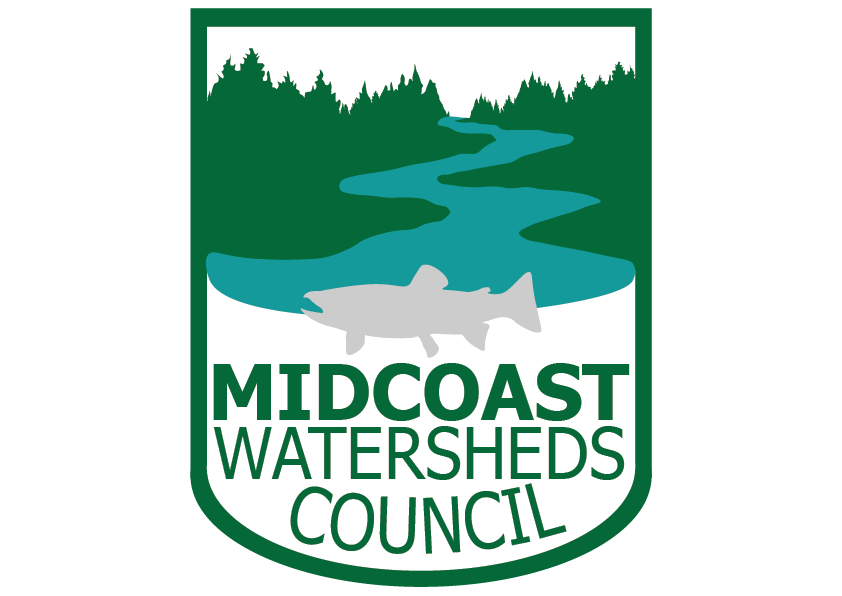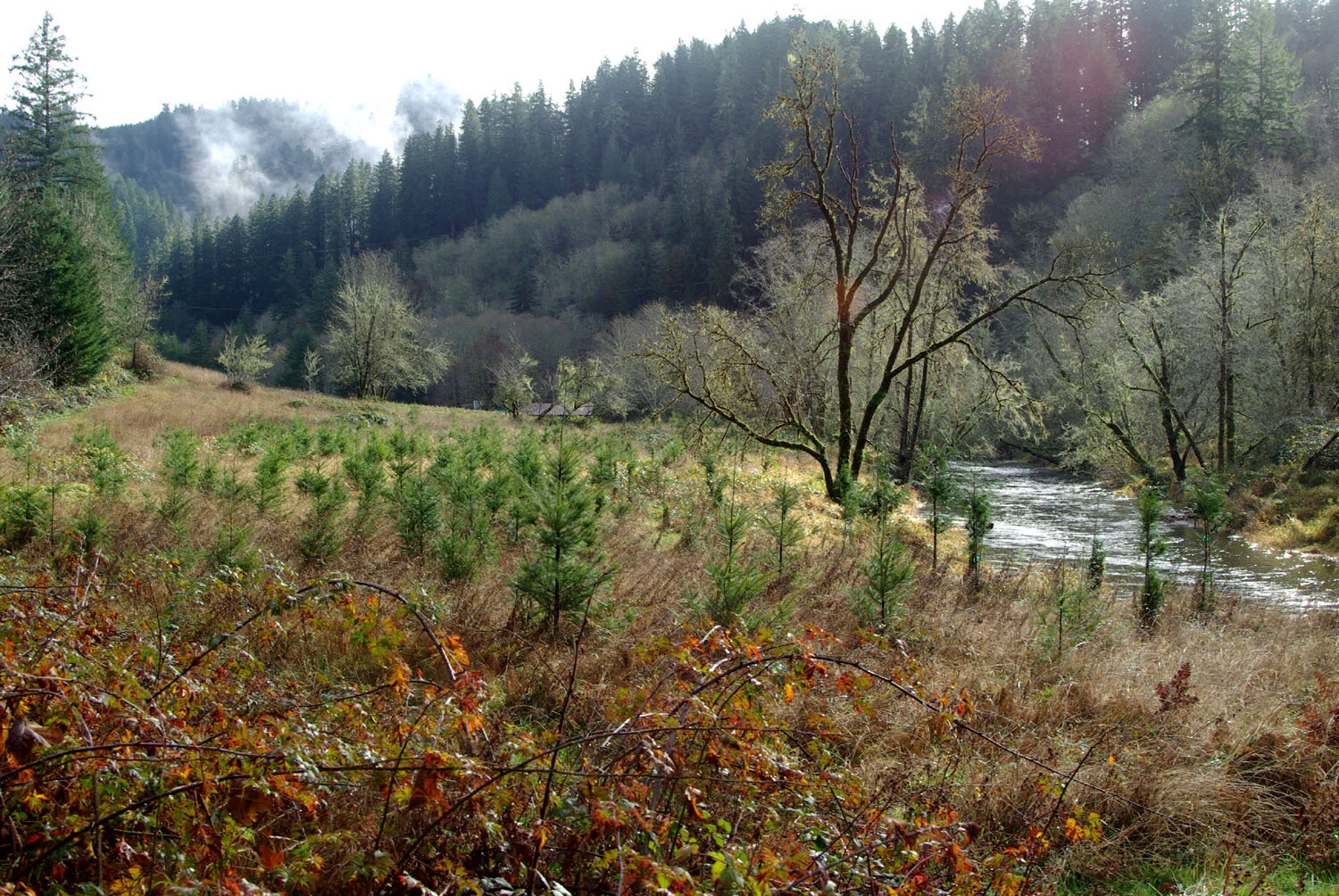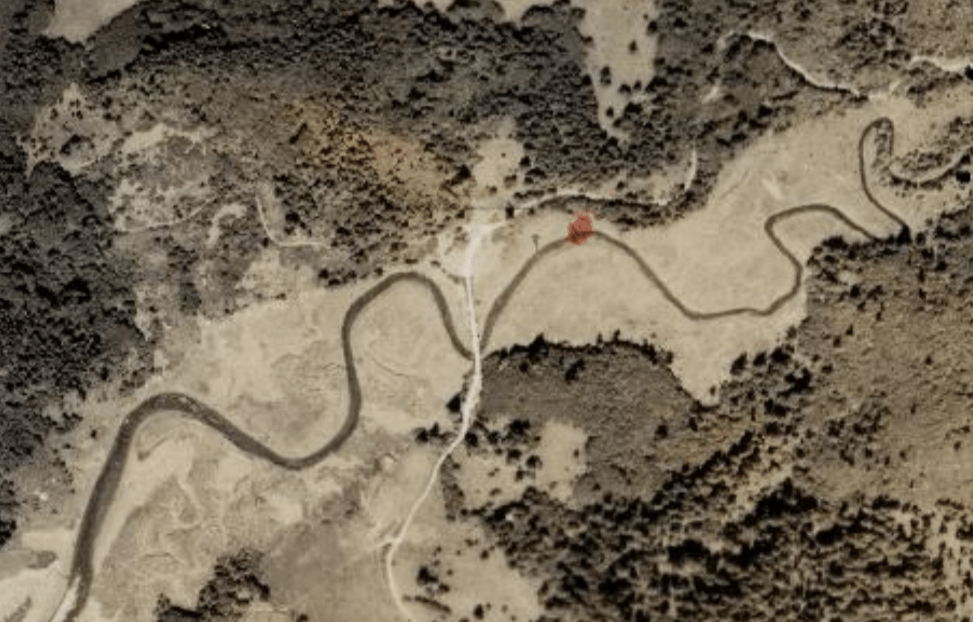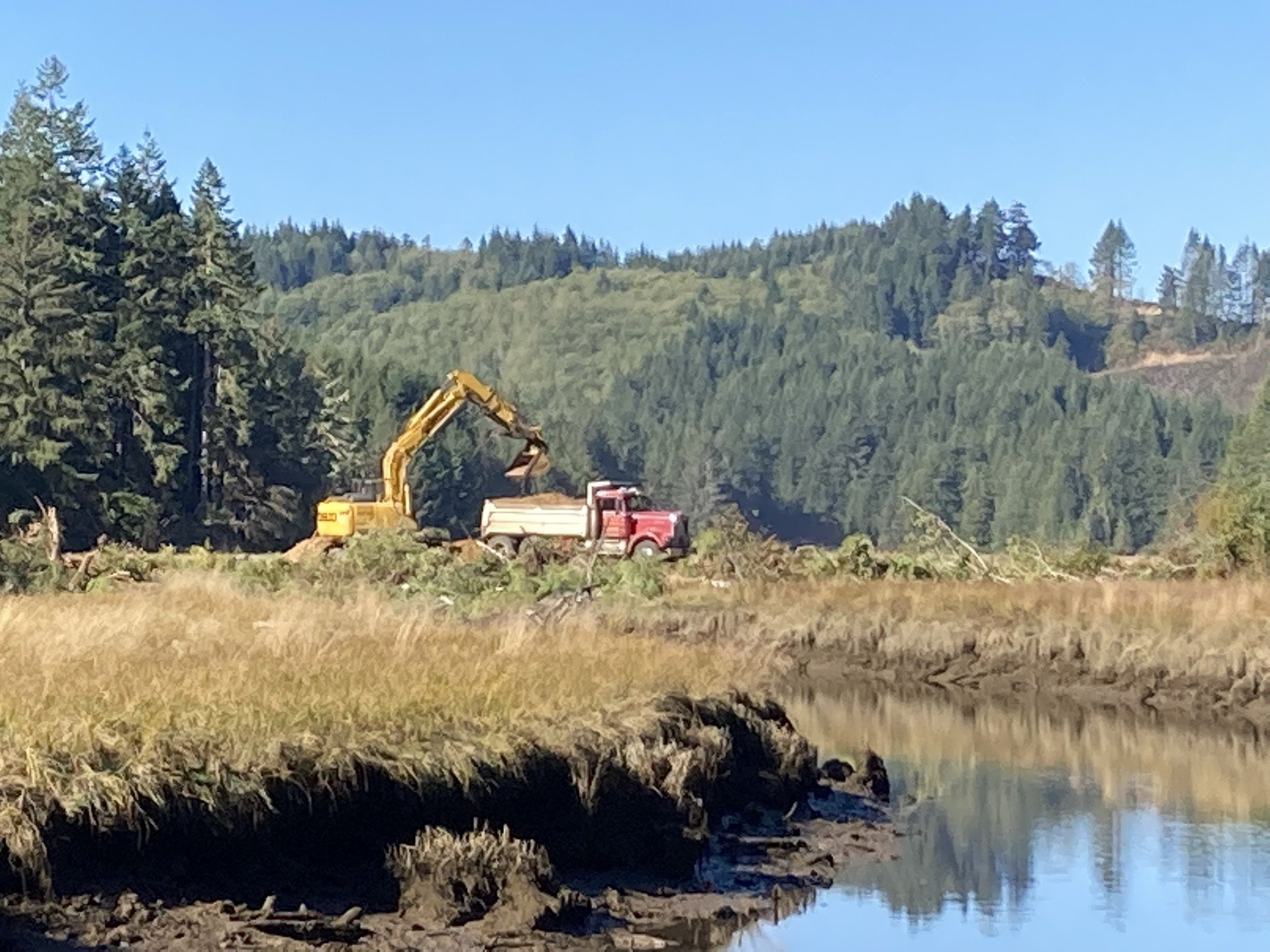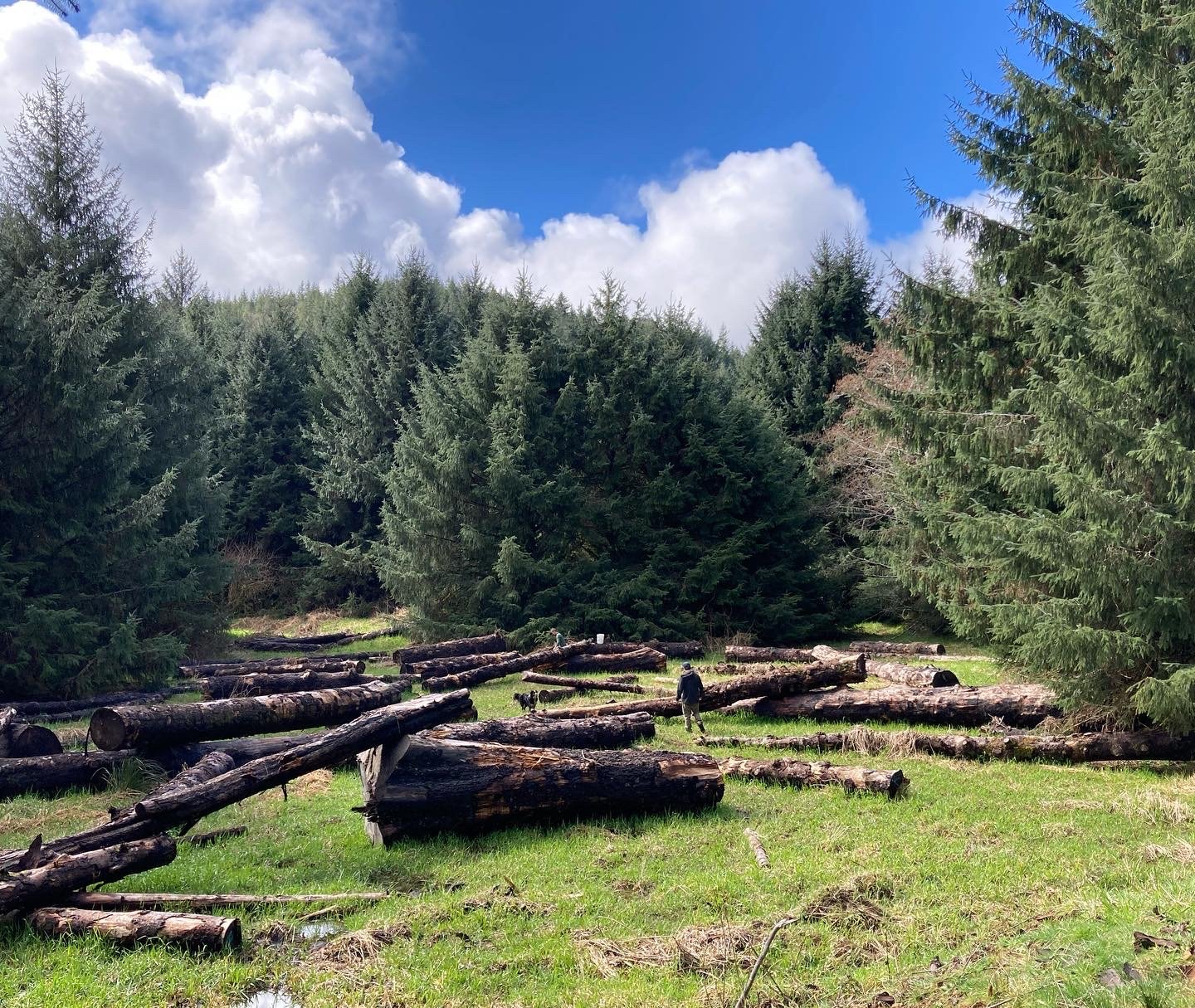Poole Slough is a tidally influenced channel in the lower reaches of Wright Creek, just before it flows into the Yaquina River Estuary.
Map of planting sites and road removal.
Poole Slough was dramatically simplified historically by removing large wood, building roads that are no longer in use, and the removal of wetland trees and shrubs. These actions reduced the quality and quantity of habitat for fish and wildlife.
1939 aerial photo showing simplified channel and now obsolete logging road
MCWC worked with partners to remove the obsolete road to allow full tidal exchange through the Slough, now owned by VanEck Forest Foundation and The Wetland Conservancy. This was paired with several large wood placements to increase channel complexity and encourage formation of side channels.
Excavator lowering road
Dumptruck removing fill
Water flowing freely over road at high tide
Our crews also planted spruce and crabapple along the slough to create scrub-shrub swamp habitat, over 90% of which has been lost along the Oregon Coast. These trees will provide large wood input to the slough long term.
Areas around Poole Slough were identified as future tidal wetlands when sea levels rise in our 2017 Landward Migration Zone study. To increase resiliency long term to climate change, large wood was placed in the areas identified. As they decompose, they will act as nurse logs for young spruce trees. In the meantime, they are habitat for birds, insects, mushrooms, and all the other beings that depend on fallen trees.
Partners include ODWF, VanEck Forest Foundation, ODFW, The Wetlands Conservancy, USFWS, The Forest Service, Pacific Forest Trust, and others.
